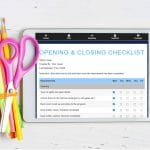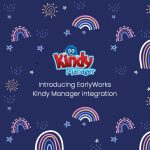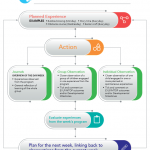Learning through Play
For those of you who regularly read the EarlyWorks blog, it will be no surprise that I am a big fan of the book ‘Learning through Play’ by Christine Robinson, Tracy Treasure, Dee O’Connor, Gerardine Neylon, Cathie Harrison and Samantha Wynne. Although this book was written with early childhood students in mind, it is also relevant for those of us working in the early childhood education and care context (Particularly for those of us who’ve been around for more years than we care to admit 😉). It’s easy to read, and it takes the reader from theory to practicalities of planning and then ‘doing’ the whole play-based approach, and then to effectively documenting, or making visible children’s learning. It’s the documenting part that I’ve been delving into this week.
As I read the chapter on documentation (chapter 9 for those of you keen to go direct to the source) there were a couple of points that really stood out for me. Firstly, that ‘sharing a photo of a child working on a task is not evidence of learning’, and secondly, there is no one correct documentation template.
So, regarding the first point on photo sharing, I think it needs a bit of clarification. Photo sharing on its own may not be evidence of learning, as documentation is bigger than a photo. Good documentation offers insight into children’s thinking, feelings, and understandings. However, photo sharing, with insightful captions, can bring families into their child’s day, and be a springboard for discussion about what the child got up to at day care. Sharing that photo might then open up discussion not only between the family and the child, but the family and the educator, with families offering extra insight into the story the photo might be telling.
The second point regarding not having a one size fits all documentation template is an important one. The way we document needs to meet the needs of the children, the families, and the community. These needs will be different in different rooms, in different services and in different communities.
So how does all of this relate to EarlyWorks? Well, where to start!
The templates for recording observations, journals and experiences are very flexible in EarlyWorks, allowing educators to use a range of observation styles and plan for any kind of experience. So educators are not limited to one particular style.
And, EarlyWorks allows educators to share photos simply on their own, or with a caption, or as part of an observation or journal. Families can also share photos with educators. Families can comment on shared photos, allowing their voice to be heard as we strive to better understand every child in our care.







